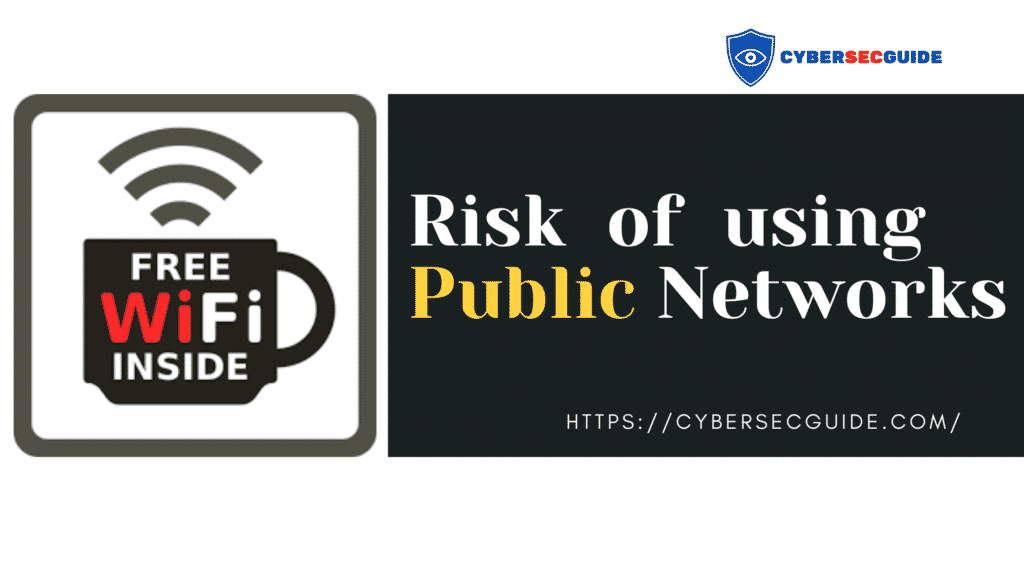When it comes to cybersecurity, more and more attention is being paid to the risks of using public networks, a form of connection to the web widely used by thousands and thousands of people worldwide daily.
If connecting to a private home or work network is not risk-free, the danger is more significant when connecting to totally insecure networks.
Public networks are nothing other than WiFi networks to which any device can connect without entering a password or lacking data encryption.
In some cases, they may require a password supplied by the network owner, but there are many devices connected at once that the risk is enormous.
Examples of these are public or “free wifi” networks in squares and tourist areas, cafes, and restaurants.
And while they are convenient and valuable in a pinch, the reality is that they carry many cybersecurity risks for those who use them.
Public wifi risks to consider
The principal risks of using public networks can be summarized as follows:
- Theft of data transmitted by your device over the network.
- Theft of data stored on your device.
- Possibility of being the target of a pishing or phishing attack.
The first of these threats are related to the presence of people connected to public networks, who are on the hunt for the data transmitted by all the other users connected to it.
Using software installed on your mobile or laptop, these cybercriminals can easily capture and steal your passwords for social networks, bank accounts, and personal or work emails that you log into while on the same public network.
Beware of the content on your devices.
The second risk is that the attacker can access the contents of folders in the internal storage of mobiles, tablets, and laptops connected to the public network.
This would allow him to extract documents, photographs, videos, and other valuable personal or intimate information.
This material can then be used to extort money from you without disclosing it to the public.
Additionally, he can install Trojans or malware on your device, which will be activated at home, and send the attacker the passwords and keys you use daily.
Pishing, is the worst risk when using public networks
Thirdly, we have one of the most significant risks of using public networks: being a victim of phishing or identity theft.
Pishing is a form of electronic fraud in which an attacker sends you emails pretending to be your bank or social network and asks for your passwords “to solve a problem” with your access.
To do this, emails are sent with links that lead to fake pages very similar to the real ones. When you try to enter with your login and password, this data will be in the hands of the attacker.
When you realize the deception, the attacker will have already used this data to access your accounts and steal money or make unauthorized online purchases.
Pishing is one of the most common phishing scams used by cybercriminals worldwide in recent years.
Pishing generates so many losses to individuals and companies that banking associations and governments have emphasized pursuing and capturing the gangs dedicated to this type of crime.
Tips to avoid risks when using public networks
The best way to protect yourself from the risks of using public networks is never to use them to access your bank accounts, personal or work emails, and social networks.
But if you feel the urge to do so, first find out who manages the network and what security method they use. The most secure authentication method is WPA2, but many public networks use WEP, which modern standards consider old and insecure.
Other tips are:
- Avoid sharing photos, videos, and personal messages using these public networks.
- Turn off data synchronization on your devices, including automatic downloading of mailboxes and synchronization of photos in the cloud.
- Install a firewall program that limits or prevents any incoming connections to your device. All modern devices include some form of firewall that you can use.
- Install an antivirus program on your laptop, mobile, or tablet. They not only protect you against computer viruses but also Trojans and malware.
- Install the latest security updates for your devices’ operating system and software.
- Disable your device’s WiFi when you go outside to prevent it from automatically connecting to insecure networks without you realizing it.
In conclusion, remember that the best cybersecurity tool is prevention. Apply this premise whenever you use any technological resources that give you access to the web.
